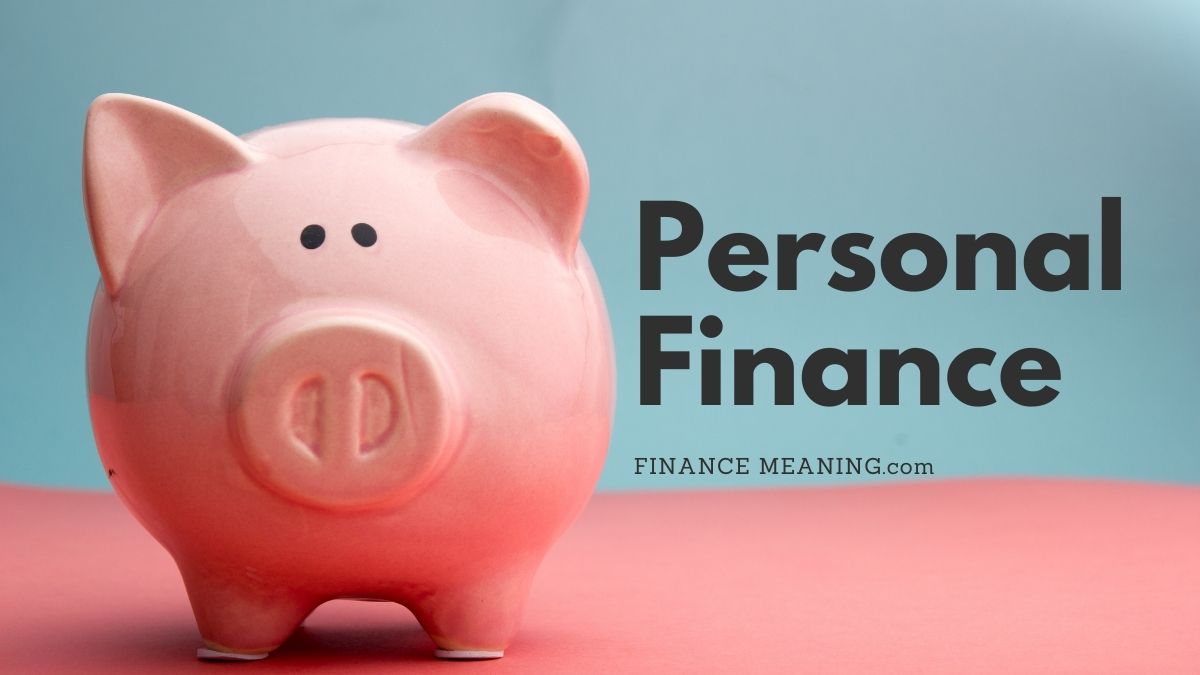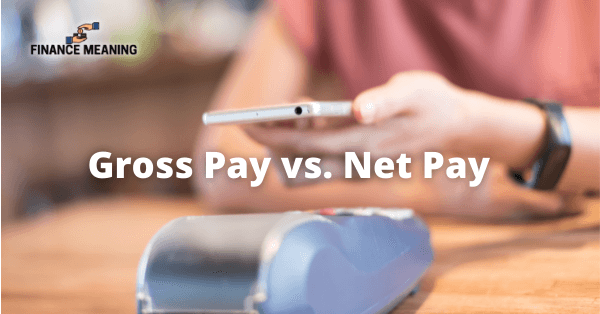In the dynamic world of personal finance management, the right software can be a game-changer for individuals striving to achieve financial clarity and control. The year 2024 has introduced an array of personal finance software options, each promising to simplify budgeting, investment tracking, and financial planning. This guide delves into the top-rated personal finance software of the year, providing comprehensive reviews, user experiences, and tips for Mac users to manage their finances effortlessly.
Key Takeaways
- Quicken remains a leading choice for comprehensive financial management, offering advanced investment insights and a free trial to new users.
- Empower stands out for its ability to integrate investment tracking with ease, providing a clear overview of all financial accounts.
- Mint continues to be the preferred budget tracker for many users, thanks to its user-friendly interface and effective budgeting tools.
- Mac users have a variety of personal finance software options like Moneydance and Mint that offer Mac-specific features and benefits.
- When selecting personal finance software, consider factors like pricing models, security features, and the ability to tailor the software to individual financial goals.
Comprehensive Reviews of Top Personal Finance Software


Quicken: The Veteran of Financial Management
Quicken has long been a front-runner in personal finance management, offering a robust suite of tools that cater to a variety of financial needs. From tracking daily expenses to managing investments, Quicken provides a comprehensive solution for users seeking control over their financial life.
The software’s evolution has been significant since its inception in 1983, with a focus on adapting to user needs and incorporating new technologies. The latest updates have introduced features that enhance the user experience, particularly for Mac users, offering a more intuitive financial overview and improved budgeting tools.
Despite its many advantages, Quicken’s approach to software management and package offerings may require some navigation. Users should consider the different versions available, such as Quicken Deluxe, which includes planning tools for retirement and debt management.
Quicken’s ability to integrate with multiple financial institutions and provide custom reports makes it an invaluable ally in personal finance.
Here’s a quick glance at what Quicken offers:
- Detailed financial insights
- Budget creation and adherence
- Investment tracking
- Retirement and debt planning tools
- Customizable reports
Choosing the right Quicken package is crucial to ensure you have the features that align with your financial goals.
Empower: Integrating Investments with Ease
Empower stands out in the personal finance software arena by offering a seamless integration of budgeting and investment tracking. Users can view all their financial accounts in one place, including bank accounts, credit cards, IRAs, 401(k)s, mortgages, and loans, which supports informed decision-making.
The platform is recognized for its user-friendly design and is continually updated to meet the evolving needs of its users. While Empower’s budgeting features may not be as comprehensive as some other apps, it compensates with robust investment management tools.
Empower is a dynamic platform that not only allows for effective money management but also provides users with valuable insights into their financial health.
For those considering the investment management services, Empower charges 0.89% for accounts under $1 million. This fee is for users who opt to add this service to the free app, which already includes powerful planning and analytics tools.
Here are some of the standout features of Empower:
- A budgeting app and investment tool in one
- Free access to money, retirement, and investment management reports
- Customizable expense categorization
- Easy account linking for comprehensive financial oversight
Mint: The Go-To Budget Tracker
Mint stands out as a free personal finance app that not only helps you track your expenses but also categorizes your transactions automatically. With Mint, you can view all your financial accounts in one place, which simplifies the process of managing your money.
Mint’s budgeting tools are particularly user-friendly, offering insights into your spending patterns and helping you stay on top of your finances daily. The app also provides customizable alerts for due dates and potential security issues, ensuring you’re always informed.
Mint is backed by Intuit, a leader in financial software, which adds a layer of trust and security to the app. While it’s free, Mint also highlights savings offers and features multiple security features, making it a comprehensive tool for financial management.
However, users should be aware that mastering Mint may come with a learning curve, and it does not offer a bill-paying feature. Despite these considerations, Mint remains a top choice for those starting their journey in budgeting and financial planning.
Monarch Money: Setting and Achieving Financial Goals
Monarch Money stands out for its ability to seamlessly integrate goal setting with financial tracking, providing a clear and actionable roadmap to financial success. Its single-view dashboard offers a comprehensive overview of your finances, making it easier to manage your money and work towards your financial goals.
With Monarch Money, users can enjoy a detailed budget planning calendar and a mobile app that connects with multiple financial accounts, enhancing the convenience of financial management.
Monarch Money’s core features include:
- Net Worth Tracking: Easily monitor your net worth with real-time data from all linked assets.
- Spending Insights: Gain valuable insights into your spending habits and identify areas for potential savings.
- Financial Plan and Savings Goals: Set personalized financial goals and track your progress meticulously.
- Investment Tracking: Analyze your investment portfolio and ensure it aligns with your financial objectives.
The platform’s commitment to holistic financial growth is evident in its continuous feature expansion, including the promise of personalized financial advice. With a subscription cost of $14.99 per month or $99 per year, Monarch Money positions itself as a valuable tool for those focused on achieving their financial aspirations.
Moneydance: Streamlined Bank Connectivity
Moneydance distinguishes itself with its Direct Connect feature, which offers users a secure and efficient way to synchronize their banking information. This protocol is a cornerstone of Moneydance’s functionality, ensuring that your financial data is always up-to-date and easily accessible.
- Seamless Bank Integration: Moneydance’s automatic bank feeds keep your accounts synchronized without the need for manual updates.
- Robust Security: Encrypted data security is at the heart of Moneydance, providing peace of mind for users.
- One-Time Purchase: A single payment grants full access to the software, with no recurring subscription fees.
- International Currency Support: Moneydance caters to a global audience with its multi-currency capabilities.
Moneydance serves a diverse user base, offering a comprehensive platform that emphasizes user privacy and security. Its straightforward approach to financial management makes it a reliable choice for those seeking a no-subscription solution.
Choosing the Right Software for Your Financial Goals


Budgeting for Beginners: Where to Start
Embarking on the journey of budgeting can be both empowering and challenging. Building long-term wealth starts with understanding your daily expenses and how they align with your financial goals. Creating a sustainable budget is the first step towards financial freedom.
When you want to create a budget you’ll stick to, begin by determining your income, tracking your expenses, and setting realistic goals.
Here are some popular budgeting methods to consider:
- 50/30/20 budget: Allocate 50% of income to essentials, 30% to wants, and 20% to savings and debt repayment.
- Zero-based budgeting: Assign every dollar a job, ensuring income minus expenses equals zero.
- Envelope system: Use cash for spending categories to curb overspending.
Remember, the best budgeting tool is one that you will consistently use. Whether it’s a simple spreadsheet or a sophisticated app, choose a tool that fits your lifestyle and financial objectives.
Investment Tracking for the Savvy Investor
For the savvy investor, tracking investments is a critical component of personal finance management. Personal Capital shines in this area, offering robust tools for monitoring investment performance, asset allocation, and retirement planning. The investment checkup feature is particularly useful for those who manage their portfolios without regular rebalancing.
- Financial Plan and Savings Goals
- Investment Tracking
- Expense Categorization
- Account Linking
With the right software, investors can seamlessly integrate their budgeting needs with their investment strategies, ensuring a comprehensive view of their financial health.
Empower also stands out with its dual focus on budgeting and wealth tracking. It offers a free app with the option to add investment management services, catering to both casual and serious investors. The ability to link to various accounts, including IRAs, 401(k)s, and loans, makes it a versatile choice for investment tracking.
Retirement Planning with Precision
Retirement planning requires a meticulous approach, and the right software can make all the difference. NewRetirement stands out for its comprehensive tools tailored specifically for retirement readiness. With features like custom planning rules and retirement account integrations, it’s a premier choice for those looking to secure their future.
Empower, formerly known as Personal Capital, is another robust option, offering a blend of budgeting, investment tracking, and retirement planning. Its strength lies in its ability to provide a holistic view of your finances, making it easier to strategize for the long term.
When considering retirement planning software, it’s essential to look for platforms that offer detailed projections and adaptability to your unique financial situation.
Here’s a quick comparison of some top-rated software for retirement planning:
| Software | Specialization | Notable Feature |
|---|---|---|
| NewRetirement | Detailed retirement plan | 14-day free trial |
| Empower | Holistic financial view | Investment account reviews |
Remember, the goal is to find a tool that not only helps you plan but also grows with you as your financial landscape evolves.
Customization: Tailoring Software to Your Needs
Customization in personal finance software is a game-changer for users who want a tool that adapts to their unique financial landscape. The ability to add or remove categories allows for a personalized experience, ensuring that the software grows with your changing financial needs. For instance, small business owners can benefit from custom invoice management features, while individuals can tailor their budgeting spreadsheets with conditional formatting for better clarity.
The key to effective financial management software is not just the range of tools it offers, but how well you can mold those tools to fit your life.
When selecting a software, consider the following customization options:
- Category Management: Add or remove categories to reflect your income and expenses.
- Interface Customization: Adjust menus and toolbars to streamline your workflow.
- Conditional Formatting: Use color-coding to highlight areas of concern in your budget.
Remember, while powerful features are enticing, they should not come at the cost of usability. A complex system overloaded with unused features can lead to frustration. Instead, look for software that balances functionality with simplicity, allowing you to focus on what’s important—managing your finances effectively.
User Experiences with Personal Finance Software


Real User Reviews and Testimonials
When it comes to personal finance software, the voices of actual users are invaluable. Their experiences can shine a light on the practicality and user-friendliness of the software. To ensure we’re presenting the most reliable information, we’ve combed through countless reviews across major platforms. Here’s a snapshot of the criteria we used to gauge user satisfaction:
- Minimum rating of 4.5/5 on the iOS App Store
- Minimum rating of 3/5 on Google Play
- At least 1,000 user reviews
The collective wisdom of users is a powerful tool for assessing the quality of personal finance software. It’s not just about the numbers; it’s about the stories and experiences behind them.
By focusing on software that meets these benchmarks, we aim to provide a curated list of top-tier options that have proven their worth in the real world. User feedback is a cornerstone of our review process, ensuring that the software we recommend has a track record of satisfaction and success.
Comparing User Interface and Usability
When it comes to personal finance software, user interface (UI) and usability are paramount. A complex system laden with features is of little value if the learning curve is steep and navigation is cumbersome. Users often seek software that balances robust functionality with intuitive design, ensuring a seamless experience from desktop to app.
- Ease of Use: The software should be straightforward and simple to operate.
- Customization: Users appreciate the ability to tailor the interface to their needs.
- App/Desktop Experience: Consistency across platforms is crucial for a smooth transition.
- Personalization: The option to personalize dashboards and reports enhances usability.
The ideal personal finance tool is one that not only meets your financial tracking needs but also aligns with your personal interaction style and technical proficiency.
Considering the diversity of user preferences, software developers have taken various approaches to UI design. Some prioritize a hands-on, detailed management style, while others focus on automation and predictive features. The key is finding a tool that resonates with your budgeting style and offers a pleasant user experience without unnecessary complexity.
Community Support and Resources
The strength of community support and resources can significantly enhance the user experience with personal finance software. Good customer service is often reflected in the community and resources available to users. For instance, some software offers a comprehensive help center, a dedicated support team, and a vibrant community forum where users can exchange tips and solutions.
- Help center with FAQs and tutorials
- Dedicated support team for personal assistance
- Community forums for user interaction and problem-solving
- Educational resources including budgeting advice and workshops
- Regular security updates and best practices
When choosing personal finance software, consider the breadth and quality of support and resources provided. This can make a substantial difference in how effectively you can use the software and resolve any issues that may arise.
Software Updates and Feature Additions
Keeping your personal finance software up-to-date is crucial for maintaining security and accessing the latest tools to manage your finances. Regular updates can introduce new features, enhance existing ones, and fix any bugs or security vulnerabilities that have been discovered. It’s important to note that some updates may require an additional purchase, especially for major upgrades that offer significant improvements or new functionalities.
- Feature Enhancements: Improved user interfaces, additional reporting capabilities, and more robust budgeting tools.
- Security Updates: Critical patches to protect your financial data from new threats.
- Performance Improvements: Faster processing, reduced load times, and smoother operation across devices.
- New Integrations: Connectivity with more financial institutions and support for additional currencies or cryptocurrencies.
Staying informed about the latest updates ensures that you are getting the most out of your personal finance software. It’s a proactive step towards better financial management and peace of mind.
When considering updates, it’s also worth comparing the frequency and impact of these changes across different software options. Some may offer regular, incremental updates, while others might release substantial updates less frequently. Users should weigh these factors based on their personal needs and the complexity of their financial situations.
Maximizing Your Mac’s Potential with Finance Software


Best Personal Finance Software for Mac Users
Mac users have a variety of top-rated personal finance software to choose from, each offering unique features and benefits tailored to the macOS ecosystem. When selecting the right tool for your financial management, it’s essential to consider not only the software’s capabilities but also how it aligns with your financial goals.
- Mint: Renowned for its budgeting and expense tracking prowess.
- Banktivity: Often praised for its comprehensive financial overview.
- iFinance: Known for its intuitive interface and investment tracking.
- Moneyspire: Appreciated for its simplicity and user satisfaction.
It’s always a good idea to talk to a financial planner when getting started with finances. This ensures that the software you choose complements your financial strategy and objectives.
Remember, managing finances and filing taxes are not the same thing. A good personal finance software for Mac should provide a clear picture of your financial health and help you make informed decisions. As PCMag suggests, finding a replacement for Mint or another tool should help you make sense of your budget and manage your household spending effectively.
Optimizing Software Performance on macOS
For Mac users, optimizing the performance of personal finance software is crucial to ensure a seamless experience. macOS is known for its robustness and efficiency, but to get the most out of your financial applications, there are a few key steps to follow.
Firstly, always keep your macOS updated to the latest version. This ensures that you have the latest security patches and performance improvements. Secondly, regularly clean your Mac’s cache and remove unnecessary files to free up space and resources. Thirdly, consider using a dedicated SSD for your financial software to speed up data access times.
It’s essential to align your software with your Mac’s capabilities to achieve optimal performance.
Lastly, check if the software is optimized for Apple Silicon if you’re using an M1 or M2 chip. This can make a significant difference in speed and efficiency. By following these steps, you can enhance your financial management experience on Mac.
Mac-Specific Features and Benefits
When it comes to personal finance software for Mac users, the benefits are tailored to the seamless integration with macOS. Mac-specific features often include a more intuitive user interface that aligns with the design language of macOS, ensuring a familiar and comfortable experience for users.
- Integration with macOS features such as Touch ID and Siri for enhanced security and convenience.
- Compatibility with Mac hardware, including the use of Retina displays for crisp visuals.
- iCloud synchronization for up-to-date financial data across all Apple devices.
The right software not only provides robust financial management tools but also leverages the unique capabilities of Mac systems to deliver a superior user experience.
It’s important to consider the system requirements and potential syncing issues reported by some users in the Apple App Store. Always verify bank support and compatibility before purchasing to avoid any inconvenience. The investment in Mac-compatible software, typically priced at $69.99, can be a wise choice for both beginners and experienced users seeking a pleasing UI and mobile accessibility.
Cross-Platform Compatibility Considerations
When selecting personal finance software, cross-platform compatibility is a crucial factor for users who operate across different devices and operating systems. A seamless transition between desktop and mobile platforms ensures that managing your finances is convenient and efficient, regardless of your location or device.
- Ease of use across platforms is essential for a positive user experience.
- Security features such as multi-factor authentication and encrypted networks are vital for protecting your financial data.
- Regular updates are important to maintain functionality and introduce new features.
Ensuring that your chosen software provides a consistent and reliable experience on all your devices can significantly enhance your financial management.
It’s also important to consider the personalization options and whether the software allows for sharing of financial data securely when needed. Before committing to a purchase, verify the system requirements and read through user reviews, especially those related to app performance and syncing issues.
Navigating the Financial Software Marketplace


Understanding Pricing Models and Value
When exploring personal finance software, it’s crucial to understand the various pricing models and the value they offer. The cost of budgeting apps ranges from free services to monthly or annual subscriptions, with some offering initial promotions to attract users. It’s important to be vigilant about potential price increases once promotional periods conclude.
- Free services may be sufficient for basic needs but often include in-app ads.
- Monthly subscriptions provide ongoing updates and customer support.
- Annual fees can offer savings over the long term but require upfront payment.
- Promotions, such as free trials or discounts, can provide short-term savings.
Consider the value you’ll receive from the tool compared to its cost. Free tools might cover basic budgeting, while paid options often include advanced features and personalized advice.
Always weigh the costs against the features provided, and use a comparative table to make an informed decision. Here’s a quick overview of some common pricing structures:
| Service | Cost | Promotions |
|---|---|---|
| App A | Free | N/A |
| App B | $4.99/month | 1-month free trial |
| App C | $50/year | 20% off first year |
Free vs. Paid Software: Making the Choice
When it comes to personal finance software, the decision between free and paid versions hinges on your specific financial needs and goals. Free tools often cater to basic budgeting requirements, providing a straightforward way to track expenses and income. However, they may come with limitations such as ads or fewer features.
Paid software, on the other hand, typically offers a more comprehensive suite of tools. These can include advanced analytics, personalized financial advice, and seamless integration with your financial accounts. It’s important to weigh the potential benefits against the cost of the software. A subscription-based model might motivate you to utilize the tool more effectively, especially if you have a financial stake in it.
Consider trying a free version or a trial period before committing to a purchase. This approach allows you to evaluate the software’s value in managing your finances without immediate investment.
For those who prefer a long-term solution without recurring fees, some software offers a lifetime license option. This can be an economical choice if you’re satisfied with the pro features and wish to avoid ongoing costs.
Security and Privacy in Financial Software
In the digital age, security and privacy are paramount when it comes to personal finance software. Users must ensure that the applications they trust with their financial data employ robust security measures.
- Look for features such as 256-bit encryption, which is considered military-grade and provides a strong defense against data breaches.
- Multifactor authentication, including options like facial recognition or codes sent to your device, adds an additional layer of security.
- Privacy policies should be clear and comprehensive, detailing exactly how your data will be used and protected.
It’s not just about the features; it’s about the commitment to safeguarding your financial life. A software’s dedication to security is reflected in its adherence to best practices, regular updates, and transparent user communication.
When evaluating personal finance software, consider the following table that outlines key security features you should expect:
| Feature | Description |
|---|---|
| Encryption | 256-bit encryption to protect data transmission |
| Authentication | Multifactor options including facial recognition and passcodes |
| Privacy Policy | Clear terms on data usage and protection |
| Data Centers | Accredited centers with regular third-party audits |
Remember, the effectiveness of these security measures is as much about their implementation as it is about their existence. Regular updates and proactive security practices are essential to maintain a high level of protection.
The Future of Personal Finance Software
As we look towards the future, the personal finance software market is evolving rapidly, with innovations that promise to enhance user experience and financial management capabilities. The integration of artificial intelligence and machine learning is expected to revolutionize budgeting and investment strategies, providing users with more personalized and predictive insights.
- Artificial Intelligence: Tailored financial advice and predictive budgeting
- Machine Learning: Enhanced investment analysis and fraud detection
- Blockchain Technology: Increased security and transparency in transactions
- Voice-Activated Assistants: Convenient hands-free financial management
The future of personal finance software is not just about tracking expenses or investments; it’s about creating a more intelligent and interconnected financial ecosystem that empowers users to make better decisions.
With the Global Personal Finance Software Market projected to grow robustly, users can anticipate more intuitive interfaces, comprehensive analytics, and proactive financial guidance. The emphasis will be on software that not only manages finances but also educates and assists in achieving long-term financial goals.
Conclusion
As we’ve explored the top-rated personal finance software of 2024, it’s clear that managing finances has never been more accessible. From Empower’s all-in-one financial overview to Quicken’s pioneering tools, and the detailed budgeting of YNAB, there’s a solution tailored to every need—be it basic budgeting or complex investment strategies. Users on Mac have a wealth of options too, with software like Mint and Moneydance standing out. Remember, while software can provide powerful insights and streamline financial management, it’s always wise to consult with a financial planner for personalized advice. With the right tools and guidance, achieving financial clarity and reaching your monetary goals is within reach.
Frequently Asked Questions
What are the best personal finance software options for 2024?
The top-rated personal finance software for 2024 includes Quicken, Empower, Mint, Monarch Money, Moneydance, Personal Capital, Tiller Money, MoneyPatrol, PocketSmith, and YNAB, catering to a variety of financial management needs.
Which personal finance software is best for Mac users in 2024?
Mac users have several great options for personal finance software in 2024, including Mint, Monarch Money, and Moneydance. Additionally, Banktivity, iFinance, and Moneyspire have been recommended by users for their Mac compatibility and features.
How do I choose the right personal finance software for my financial goals?
Consider your financial objectives, such as budgeting, investment tracking, or retirement planning. Look for software with features that align with your goals, offer ease of use, and provide strong security and privacy measures.
Are there any free personal finance software options that are highly rated?
Yes, there are several highly rated free personal finance software options, including Empower, which offers free tools, and Mint. These platforms provide basic budgeting and financial tracking features without any cost.
What should I consider when looking at the pricing models of personal finance software?
When evaluating the pricing models of personal finance software, consider the value you’re getting in terms of features, ease of use, customer support, and updates. Also, assess whether a one-time purchase or a subscription model works best for your budget.
How important is community support and resources for personal finance software users?
Community support and resources can be very important for personal finance software users, as they provide a platform for sharing tips, troubleshooting issues, and staying informed about the latest features and best practices in financial management.





